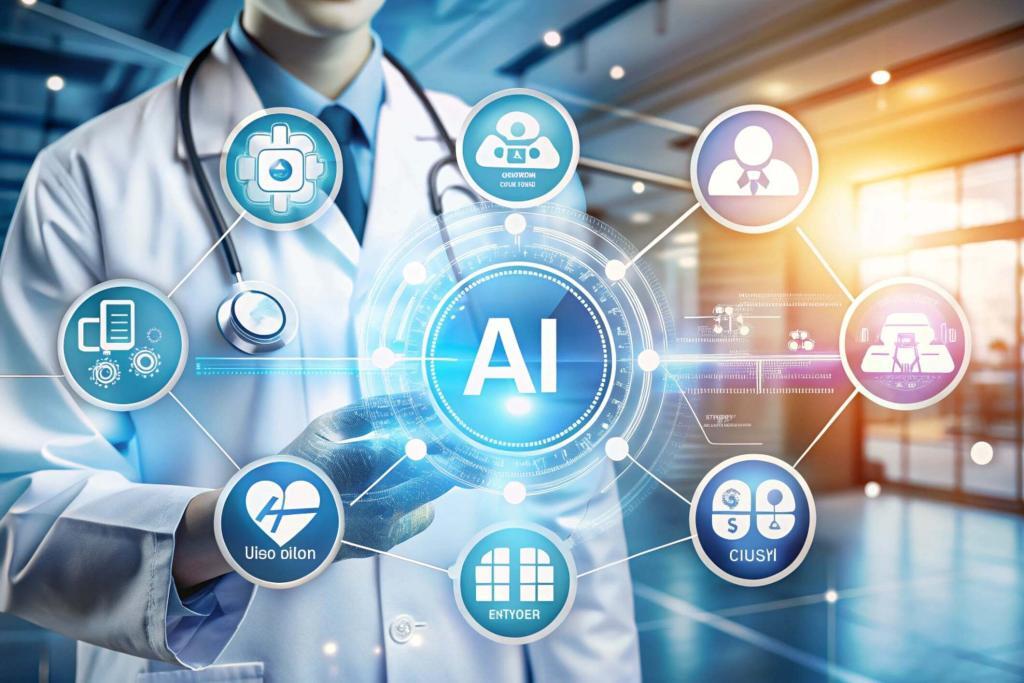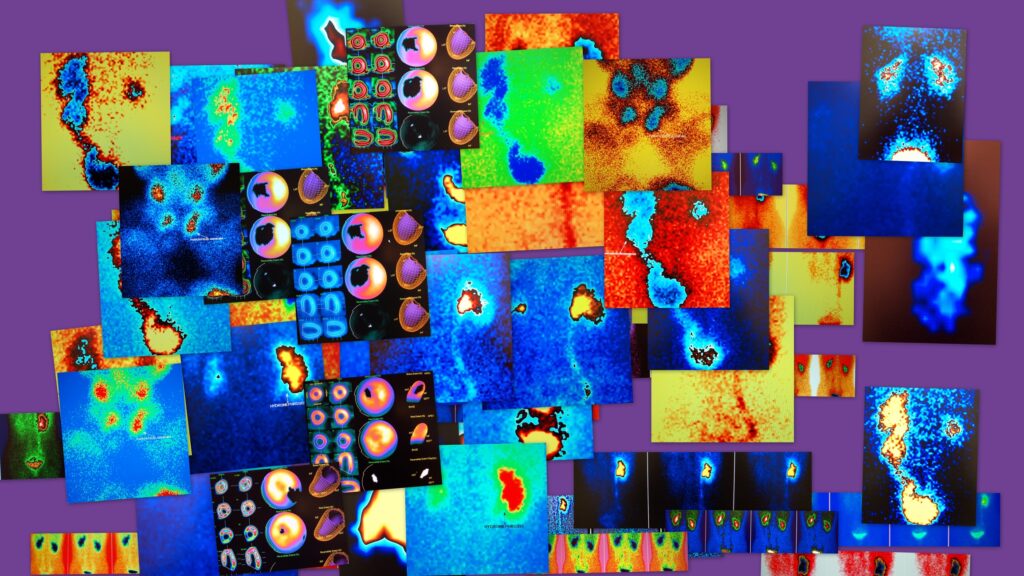Cognitive neuroscience is the scientific study of how brain structures and processes underlie mental functions such as perception, memory, decision-making, and consciousness. With recent advancements in artificial intelligence (AI) and machine learning (ML), this field has gained renewed interest. AI, particularly neural networks, is increasingly inspired by biological processes, while cognitive neuroscience is drawing upon machine learning techniques to model and predict neural activity. This article explores the interrelationship between cognitive neuroscience, AI, and machine learning, examining how insights from the brain are shaping AI development and how AI is, in turn, revolutionising the way we understand the brain.
Introduction: The Intersection of Cognitive Neuroscience and AI
Cognitive neuroscience focuses on how brain activities translate into complex behaviours such as reasoning, learning, and emotion. With the rise of artificial intelligence and machine learning, these fields have begun to intersect in fascinating ways. AI, especially through techniques like artificial neural networks, seeks to mimic human-like intelligence, drawing inspiration from the brain’s structure. Meanwhile, machine learning techniques are enabling cognitive neuroscientists to handle vast datasets, allowing them to make predictions and discover patterns in brain activity that were previously unreachable. This synergy between cognitive neuroscience, AI, and machine learning is rapidly advancing our understanding of both the brain and intelligent systems.
Historical Background: Early Influences and Diverging Paths
The collaboration between cognitive neuroscience and artificial intelligence has roots in the early days of AI research. Alan Turing’s seminal work on computing, alongside Warren McCulloch and Walter Pitts’ model of artificial neurons, laid the foundation for viewing the brain as a computational device. This computational perspective of brain function greatly influenced the development of early AI systems. However, for several decades, cognitive neuroscience and AI pursued different goals, with AI focusing more on developing autonomous systems and cognitive neuroscience concentrating on understanding human cognition.
The Rise of Neural Networks and Deep Learning
In the last decade, AI has experienced a renaissance with the advent of deep learning, a subset of machine learning inspired by the structure of the human brain. Neural networks, the core of deep learning, are loosely modelled after biological neurons, where individual nodes (neurons) connect through weighted edges (synapses). Deep learning has allowed for significant advances in AI applications, from image recognition to natural language processing.
The connectionist models used in deep learning share striking similarities with the distributed processing in the brain. Cognitive neuroscience has long studied how information is encoded across populations of neurons, and this concept has directly influenced AI architectures. The “backpropagation” algorithm, which enables neural networks to adjust their internal weights based on error feedback, is somewhat analogous to synaptic plasticity, where neural connections are strengthened or weakened in response to learning and experience.
How Cognitive Neuroscience Inspires AI Models
One of the most direct ways cognitive neuroscience has influenced AI is through brain-inspired architectures. Convolutional Neural Networks (CNNs), for example, have revolutionised image processing tasks. These networks are inspired by the visual cortex, specifically its hierarchical processing of visual information. The visual cortex processes data in layers, starting with simple feature detection (edges, contours) and progressing to complex representations like faces or objects. Similarly, CNNs employ multiple layers of “neurons” to detect progressively more complex features within an image.
Recurrent Neural Networks (RNNs), which are particularly suited for sequential data like speech and text, have been inspired by the brain’s recurrent connections, where past information is used to process new data. This type of neural activity is crucial in tasks such as memory formation and prediction, processes that cognitive neuroscience continues to explore in great detail.
Reinforcement Learning and Dopamine Systems
Reinforcement learning, a core area of machine learning, takes direct inspiration from how the brain’s reward systems function. Cognitive neuroscience has shown that the brain’s dopamine system plays a central role in reinforcement learning, driving behaviours that maximise rewards and minimise penalties. This biological mechanism has been emulated in AI through algorithms where agents learn to take actions based on the rewards or penalties they receive.
In AI, reinforcement learning has been applied to develop systems that can autonomously learn complex tasks, such as playing games like Go or optimising robotic control. Cognitive neuroscience research into how dopamine neurons encode prediction errors (the difference between expected and actual outcomes) has influenced the development of AI algorithms like Temporal Difference learning, which uses prediction errors to update the value of future states.
AI-Assisted Discoveries in Cognitive Neuroscience
While cognitive neuroscience has greatly influenced AI development, the reverse is equally true. Machine learning techniques, particularly deep learning, are transforming how we analyse and interpret neural data. Cognitive neuroscience deals with complex, high-dimensional data, such as brain imaging from fMRI and EEG, which often makes traditional analytical methods insufficient. Machine learning models have the ability to uncover patterns in this data, making it possible to generate new hypotheses about brain function and cognitive processes.
Predicting Neural Activity with Machine Learning
Machine learning models are being used to predict brain activity patterns associated with specific cognitive functions. For instance, research has employed these models to predict what a person is looking at or thinking about based on their brain activity alone. By training models on large datasets of neural imaging, researchers have been able to decode the content of thoughts, which represents a significant leap in both AI and cognitive neuroscience.
Understanding the Neural Basis of Cognitive Disorders
AI and machine learning are also being applied to understand cognitive disorders, such as Alzheimer’s disease, Parkinson’s disease, and schizophrenia. Cognitive neuroscience provides detailed insights into how these diseases affect the brain, but machine learning techniques have enabled researchers to sift through enormous datasets to find biomarkers that can predict disease progression or differentiate between similar neurological conditions.
For example, deep learning algorithms can analyse brain scans and classify them with high accuracy, leading to earlier and more precise diagnoses. In cases like autism or depression, where the neurological underpinnings are not yet fully understood, machine learning is helping to identify previously unnoticed patterns in brain activity that correlate with symptoms, guiding new treatment approaches.
Challenges and Ethical Considerations
As with any technological advancement, the intersection of cognitive neuroscience, AI, and machine learning raises several ethical concerns. One pressing issue is the potential for AI systems to be used in ways that infringe on human rights. For example, advancements in brain-computer interfaces powered by machine learning could lead to intrusive methods of surveillance or even control of cognitive functions. There are also concerns about privacy, particularly as machine learning models become capable of decoding mental states or reading thoughts from brain activity.
Furthermore, as AI becomes more integrated into healthcare for diagnosing or treating neurological conditions, there is a need for regulatory frameworks to ensure these systems are transparent, safe, and equitable. Machine learning models often operate as “black boxes,” meaning their decision-making processes are not always interpretable by humans. In fields like cognitive neuroscience, where understanding the underlying processes is key to developing treatments, this opacity could pose challenges.
Future Directions: Collaborative Research
The future of cognitive neuroscience and AI lies in collaborative research that blurs the lines between these disciplines. There is growing recognition that to build truly intelligent systems, AI must not only learn from cognitive neuroscience but also contribute back to our understanding of the brain.
Towards More Biologically Plausible AI
One exciting avenue for research is the development of more biologically plausible AI systems. Although deep learning networks are loosely inspired by the brain, they still diverge significantly from how biological neurons work. For example, biological neurons communicate using spikes or pulses rather than the continuous activations used in artificial networks. Research into “spiking neural networks” is attempting to bring AI closer to biological realism, which may lead to more efficient and powerful machine learning models.
Brain-Machine Integration
Brain-machine interfaces (BMIs) represent another area where cognitive neuroscience and AI are converging. These systems, which allow direct communication between the brain and external devices, are already in use to help individuals with disabilities control prosthetic limbs or communicate using thought alone. As machine learning models improve, BMIs will become more precise, adaptive, and user-friendly, offering new ways for humans and machines to interact.
AI as a Tool for Neuroscience
Finally, as machine learning techniques continue to evolve, AI will become an even more powerful tool for neuroscience. Techniques such as unsupervised learning, which allows models to find hidden structures in data without prior labels, could help researchers uncover novel organisational principles of the brain. Moreover, the integration of AI in neuroimaging, electrophysiology, and genomics will enable a more holistic understanding of how the brain functions as a complex, dynamic system.
Conclusion
The intersection of cognitive neuroscience, artificial intelligence, and machine learning is driving profound advancements in both fields. Cognitive neuroscience has inspired new architectures and learning algorithms in AI, while machine learning is providing neuroscientists with powerful tools to decode brain activity and understand complex neural processes. The future holds enormous potential for this synergy, with promising applications ranging from better healthcare diagnostics to more advanced AI systems. However, as these fields continue to evolve, it will be crucial to address the ethical implications and ensure that these technologies are developed in ways that benefit humanity as a whole.
Disclaimer
The content presented in this article is intended for informational and educational purposes only. Open Medscience does not provide medical, psychological, or professional advice, diagnosis, or treatment. Any views or interpretations expressed are those of the author(s) and do not necessarily reflect the official position of Open Medscience.
While every effort has been made to ensure accuracy, the information provided may not reflect the most current research developments or ethical standards in cognitive neuroscience, artificial intelligence, or related fields. Readers are encouraged to consult primary sources and qualified professionals before making decisions based on the content of this publication.
Additionally, the discussion of brain-machine interfaces, AI technologies, and medical applications is speculative and should not be construed as an endorsement or guarantee of specific outcomes. Open Medscience is not liable for any loss or damage arising from the use of or reliance on information contained in this article.
You are here: home » diagnostic medical imaging blog »



